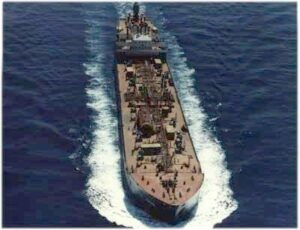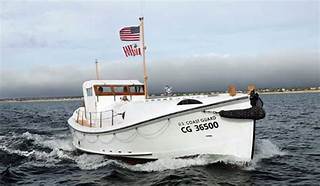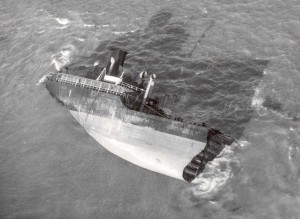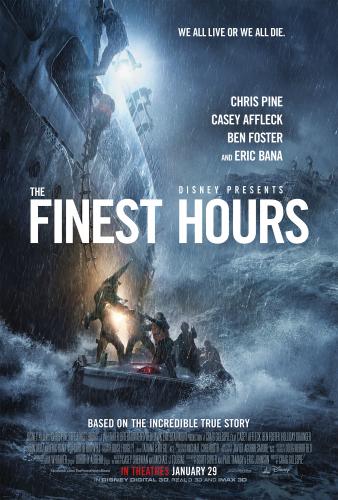SS Pendleton Rescue Launches Praise for USCG
The United State Coast Guard (USCG) has made many courageous rescues since its inception in 1915 and remains a stalwart military force. Although it doesn’t garner the attention or glamour heaped upon our Air Force, Navy or Marines, the USCG continues its “blue collar” workload with little fanfare. But such wasn’t the case on February 18, 1952 when four brave men made a dangerous and daring rescue that drew worldwide attention and launched a flood of praise in the global media.

One of the many T-2 tankers built in 1944, Credit: USCG

The motor lifeboat CG36500 of the famous Pendleton rescue, Credit: USCG
With darkness setting in, Boatswain Webber timed the bursts of the engine to ride each wave as it broke. He steered the wooden boat into the open sea after passing over Chatham Bar, a chain of hazardous shoals outside the harbor. Losing his compass when the boat almost capsized, Webber used dead reckoning to reach the remains of the tanker. Having split in two about 10 miles offshore, its crew hunkered down in a passageway, the stern was listing to its port side and floating aimlessly toward the shoals.

The :Pendleton’s stem was still adrift when help arrived, Credit: USCG
The return to shore wasn’t easy. Overloaded by twice its capacity, the seaworthy craft crossed the threatening shoals and arrived safely at Chatham Harbor. As news of the rescue flashed worldwide, the USCG arranged for Boatswain Webber to receive a gold lifesaving medal, its highest decoration for heroism. But Webber refused to accept it unless his boat crew got one too. The high command conceded. While being heaped with praise at the ceremony for meritorious service, all four honorees repeatedly said, “We were simply doing our job.”

The Finest Hours captures the drama of the USCG’s historical rescue at sea, Credit: Scribner’s Publishing Co.
Amid the acclaim heaped upon the heroes, the USCG did not forget those who were lost on the SS Pendleton. The Coast Guard was well represented at the merchant marine memorial held for “Tiny” Myers and the eight men, including the captain, who died when the bow drifted shoreward and sank on the shoals near Chatham. The wreck was refloated and salvaged a year later. Meanwhile, the stern, grounded off Monomy Island near Chatham, became a hazard to navigation. After the U.S. Army Corps of Engineers detonated it, some of the ship was salvaged and the rest left for exploration by New England sport divers. But the salvors also left behind winds, waves, swells and rip tides, all contributing to the water’s low visibility. What were once steel girders and sturdy bulkheads became shattered homes for a variety of marine life including cod, bass, flounder and lobster. State law allows spearfishing, but it’s unlawful to remove or disturb the wreckage.
The USCG remains a unique military branch composed of men and women who are responsible for saving lives, protecting the environment and securing America’s coastlines and waterways. Its motto: Semper Paratus, a Latin phrase meaning “Always Ready,” remains as bona fide today as it was when the service was founded more than 100 years ago.
Author: Ellsworth Boyd
Ellsworth Boyd, Professor Emeritus, College of Education, Towson University, Towson, Maryland, pursues an avocation of diving and writing. He has published articles and photo’s in every major dive magazine in the US., Canada, and half a dozen foreign countries. An authority on shipwrecks, Ellsworth has received thousands of letters and e-mails from divers throughout the world who responded to his Wreck Facts column in Sport Diver Magazine. When he’s not writing, or diving, Ellsworth appears as a featured speaker at maritime symposiums in Los Angeles, Houston, Chicago, Ft. Lauderdale, New York and Philadelphia. “Romance & Mystery: Sunken Treasures of the Lost Galleons,” is one of his most popular talks. A pioneer in the sport, Ellsworth was inducted into the International Legends of Diving in 2013.
All Rights Reserved © | National Underwater and Marine Agency
All Rights Reserved © | National Underwater and Marine Agency
Web Design by Floyd Dog Design
Web Design by Floyd Dog Design

0 Comments